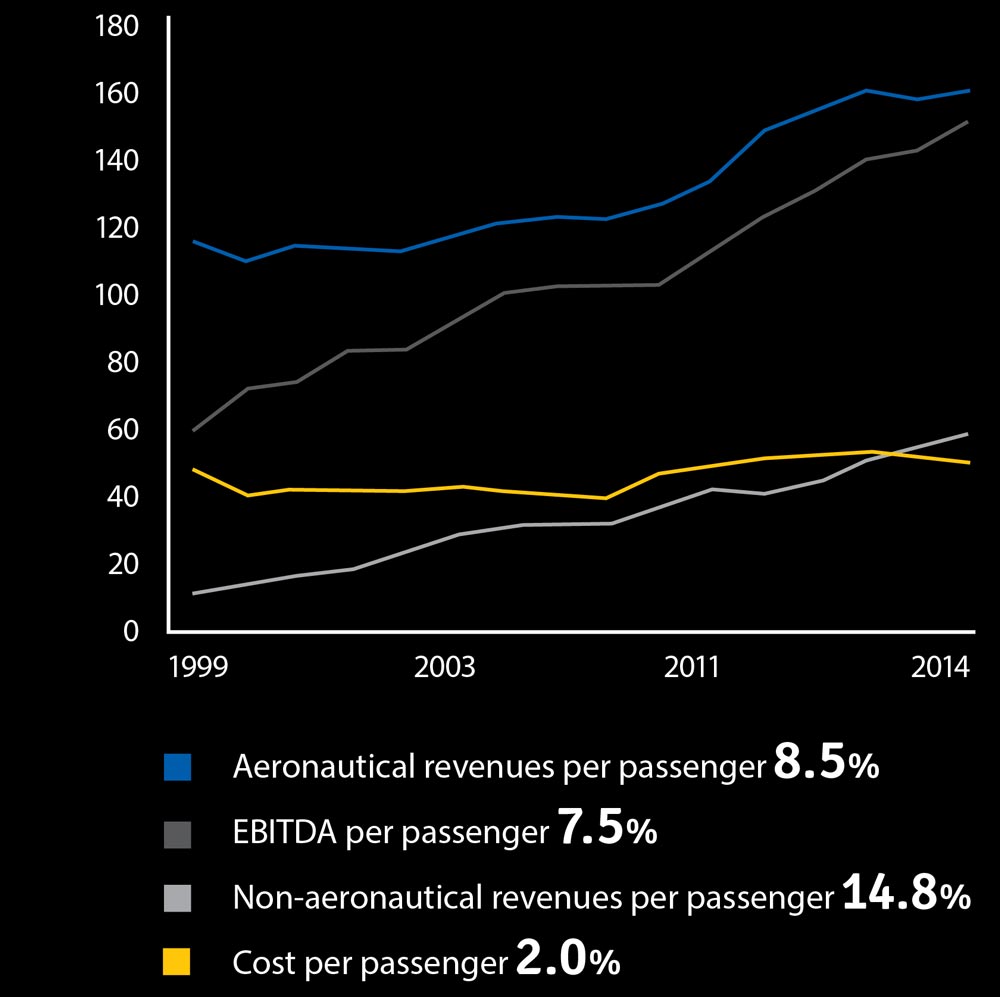For this reason, the main factor in our business is the number of passengers who use our airports, although it is just as important to have an efficient operation. Since taking on the concession, GAP has worked on improving facilities, offering attractive services to passengers, meeting our investment programs and providing attractive yields for our investors—the market value of this Company has risen from MXP 11.8 billion at the start of 2006, when it went public, to approximately MXP 52.0 billion at the close of 2014. The EBITDA margin has seen constant growth from 47.1% in 1999 to 70.1% at the close of 2014, the highest in the industry.
All aeronautical services are regulated under the maximum-rate price regulation system applicable to our airports. Aeronautical services revenues are principally dependent on the following factors: passenger traffic volume, the number of air traffic movements, the weight of the aircraft, the duration of an aircraft’s stay at the airport and the time of day the aircraft operates at the airport. So the higher the volume of passenger traffic and operations, the higher our revenues.
For example, passenger charge (known as the TUA) is collected from each passenger at their departure, and this is automatically included in the airline ticket cost. Aircraft landing and parking charges are also collected for the use of runways, illumination systems and other visual landing aid systems. Charges are also collected for the use of passenger jetways and shuttles, as well as for inspecting passengers and their carry-on baggage among other services.
Because of the importance of globally increasing aeronautical revenues, while maintaining competitive costs for our clients, at GAP we are constantly seeking new routes and frequencies to generate economies of scale, in addition to implementing negotiation strategies with airlines, capitalizing on the advantage each one offers in the cities and regions where we operate. One example of this is Guadalajara, where we are highly committed to contributing to expo and convention passenger tourism and which we could consolidate as the leading city for congresses in Latin America; or Tijuana, where the soon-to-be-opened border bridge is expected to bring tremendous growth opportunities. Other measures would be promoting multimodal connectivity, such as what was developed at the Guadalajara and Tijuana airports, with connection centers to facilitate communication between buses and aircraft.
